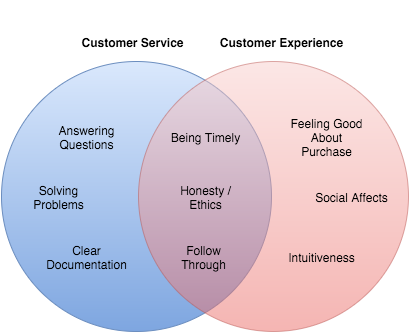Have you ever called Apple tech support? If you did, the first thing you’d hear is: “Hi, I’m an automated voice system that can understand complete sentences! So tell me, what can I help you with today, William?”—Especially if your name is also William.
Apple is known for a delivering “good” customer service. I concur. But, there is a difference between “customer service” and “good customer service”.
When you call Apple, your customer service starts with a robot that you speak to in plain language. The robot helps decide what human would be most useful to you. Then you speak to the human, and they solve your problem quickly, in a friendly manner. Even if you’re upset when you call, you’re less likely to be upset when the call is over.
If you’re reading this, you’re probably not Apple. You’re probably a small business like we are. And like us, you probably work very hard to address all of your client’s questions, quickly and completely. You have some late nights, making sure you deliver on time. When your client has a problem, you move mountains to solve that problem. This is “customer service”. Every business with competition, and a product people want, must have customer service. We have to respond to emails in a timely manner. We must address questions. We must educate. We must meet deadlines. This is customer service, and a sufficiently smart robot could do it. But they don’t and here’s why:
Customer experience is customer service’s conjoined twin. Inseparably connected, but distinctly different.
Unfortunately, if you’re listening closely, you’ll hear the terms “Customer Service” and “Customer Experience” used interchangeably. That’s wrong and It’s missing something crucial. That something is, to generalize, a matter of perspective.
Customer service is something you do, whether by the tools you provide on your website, or by a personal interaction with your client that makes it easier for them to get what they need. Customer experience, on the other hand, is something that belongs to your client. In fact, it may be the case that you cannot directly influence your customer’s experience at all. Some people have bad experiences in everything they do, because they bring that experience with them. Luckily this isn’t usually the case, but the point remains that customer service is largely your domain, while customer experience is largely theirs.
Of course, you could relegate your client’s experience all to their own responsibility, but that misses a huge opportunity.
Think about Apple’s robot customer service again. The robot you first speak to when you call Apple is providing customer service. Customers who call have a need to talk to someone who can help them, and Apple’s robot is helping them get there. It’s customer service, but it’s also influencing the customer experience. But when customers call Comcast, for example, they’re met with a recording that says “Press 1 for…. Press 2 for… Press 3 for…”. If you’re already a little frustrated, as people calling for support often are, listening to the recording feels like it’s in the way of getting the service you need. People go through those recorded systems and their customer experience is getting worse and worse each second they have to listen to the recording go through topics that are irrelevant to their needs. Sometimes by the time they’re actually talking to a human, their customer experience is so low that “good” customer service is almost impossible and companies have to resort to giving things away for free just to get their customers back to neutral.
This is demonstrating the overlapping elements of customer service and customer experience. While the experience is the customers, and whether they have a good experience or a bad one is largely in their court, a business still has to deal with the experiences customers are actually having, or else lose those customers. You can provide objectively good customer service by being timely and thorough, but if you’re not paying attention to, and attempting to positively influence, the customer’s experience it can be largely irrelevant.

Your customer service is found anywhere your client interacts with you. But your customer’s experience is is found anywhere they interact with your footprint. Your website, your product packaging and branding, your hold music, your outgoing voicemail message, your physical location, your price point, the product itself, even the way your client’s friends feel about the product; an excellent product which your client’s friends make fun of them for using is not giving them a good customer experience.
Good customer service alone cannot create a great customer experience. But, good customer service influences your customer’s experience.
If this division in definitions is new to you, I suggest taking time to list every customer service activity you engage in with your business. Once you have your list, try to identify what might be better classified as customer experience, and what might be classified as the overlap between the two. Looking clearly at what these different activities actually are in your business will make it easier for you to improve across the board and identify whether your strictly customer service activities are improving or hindering your customer’s experience as a whole.

